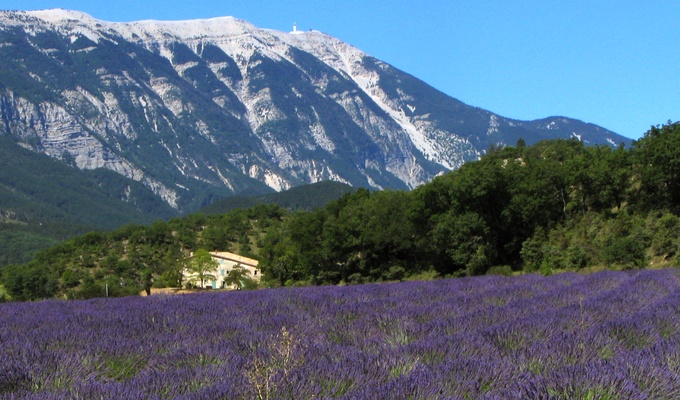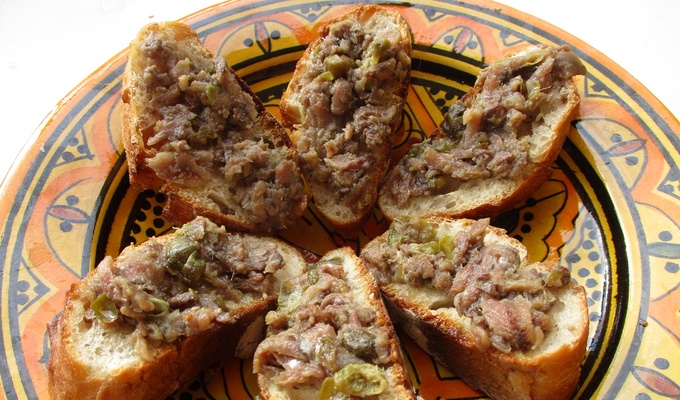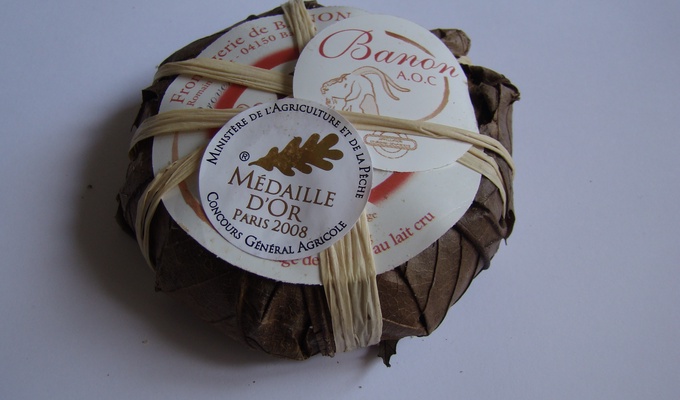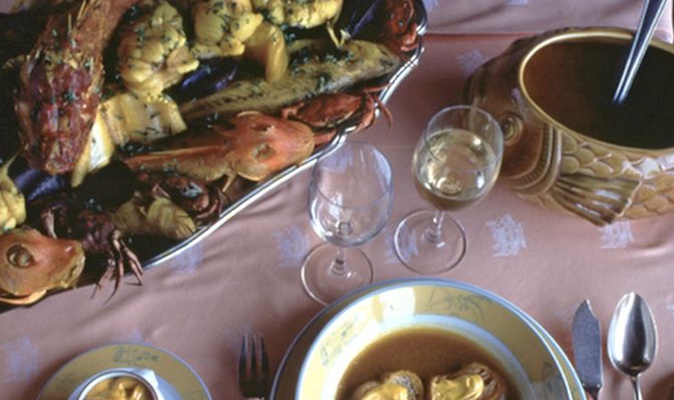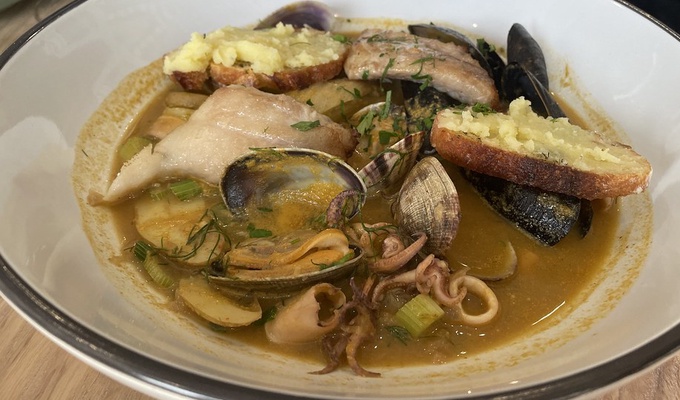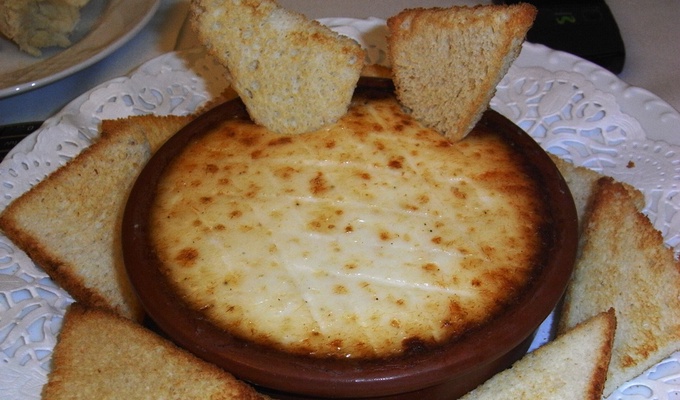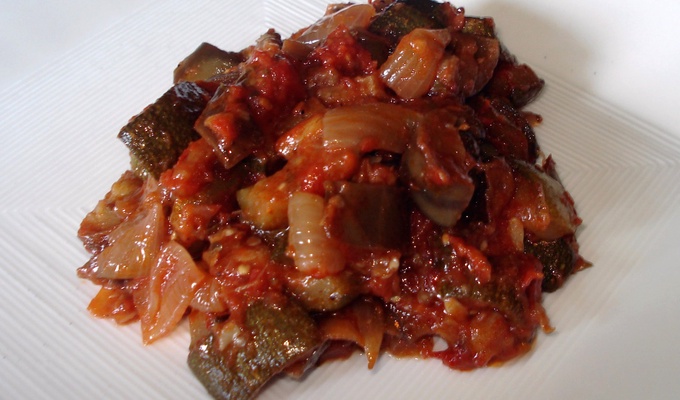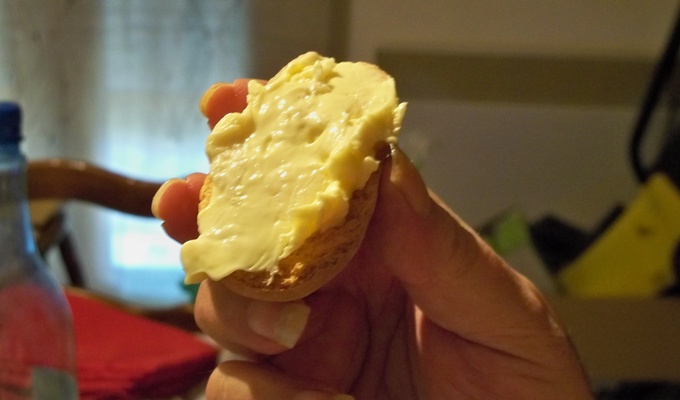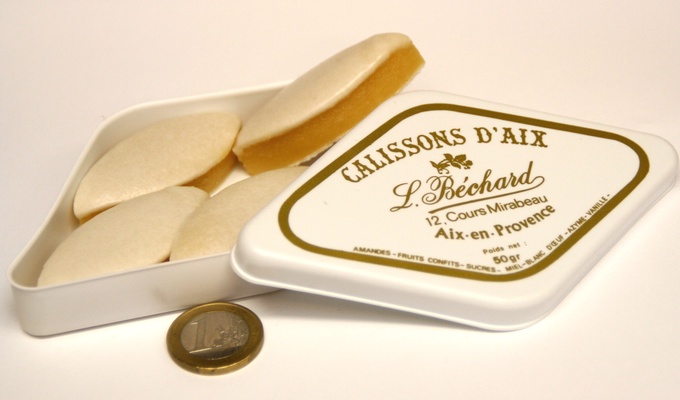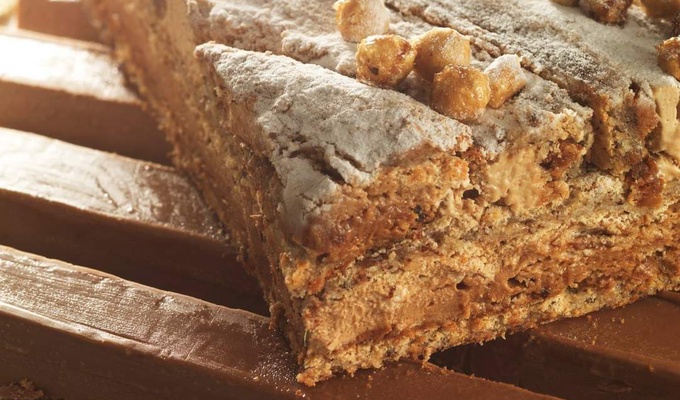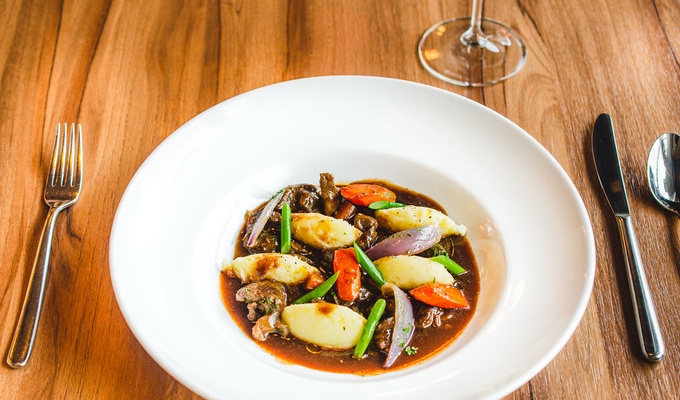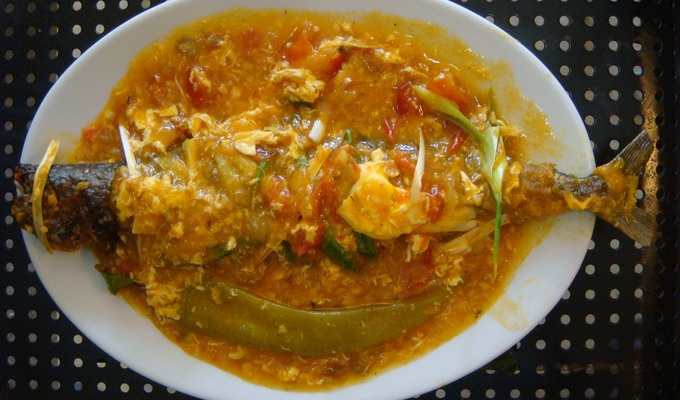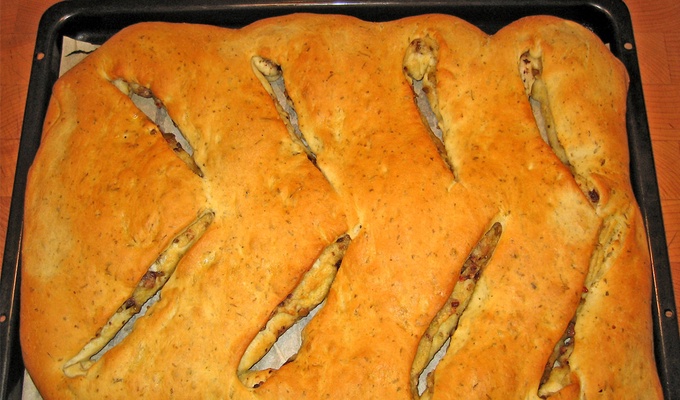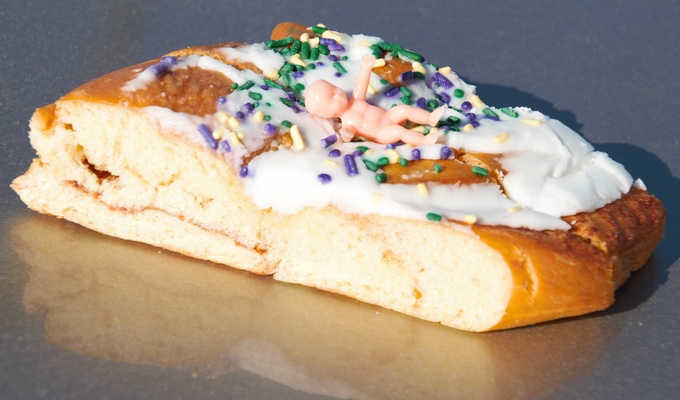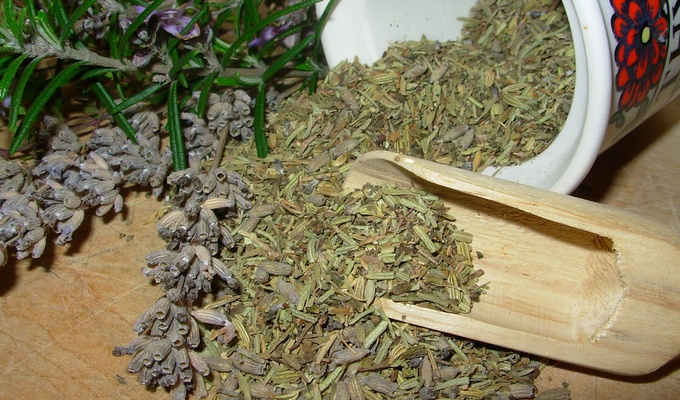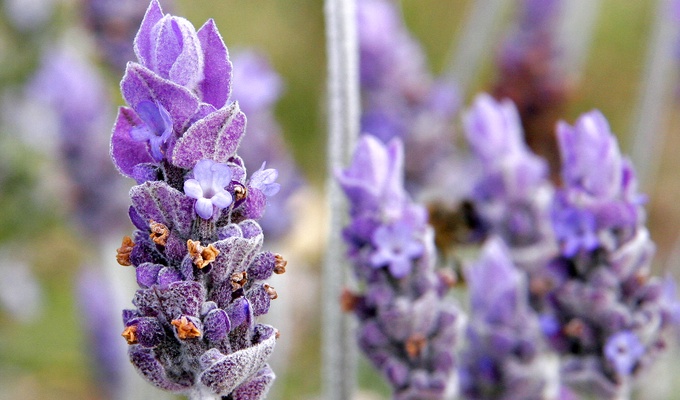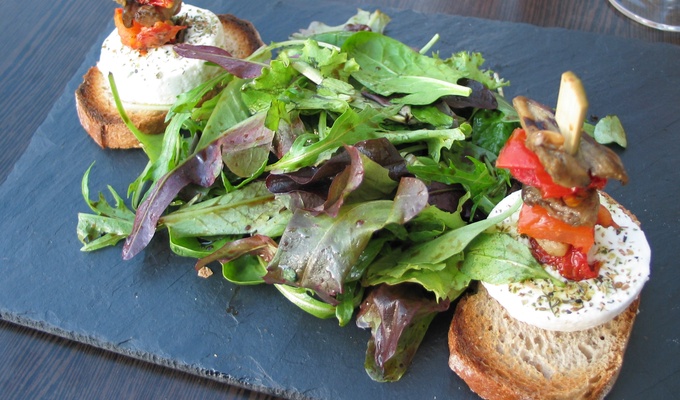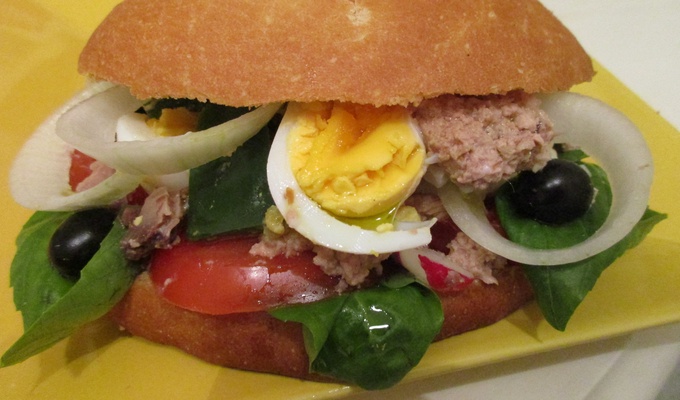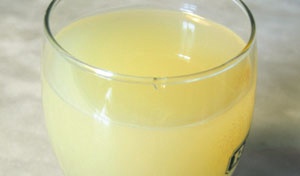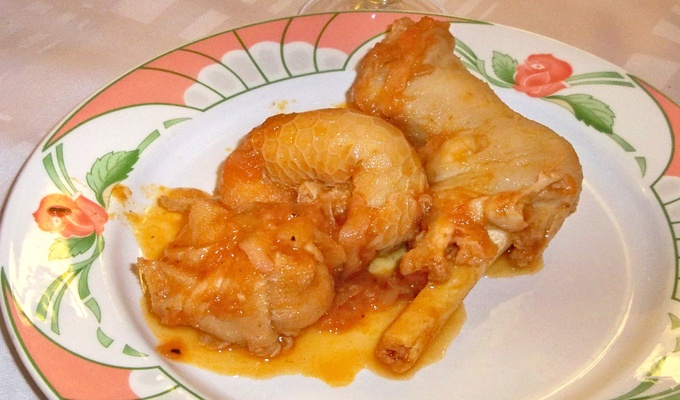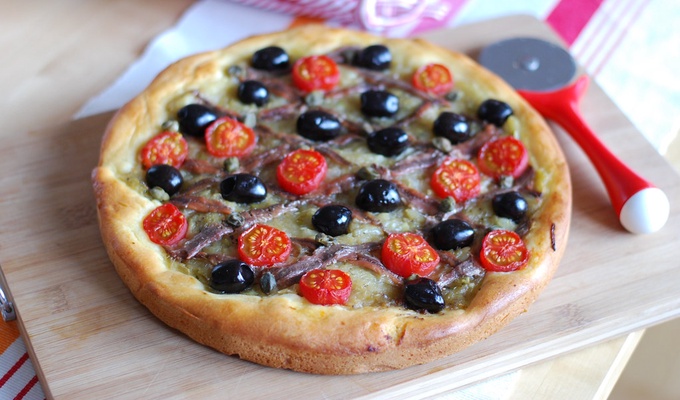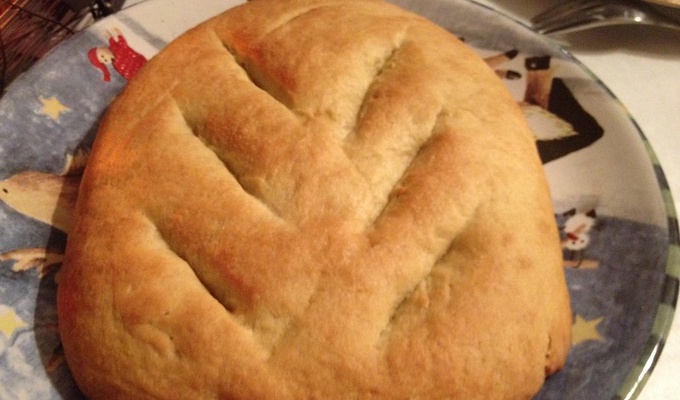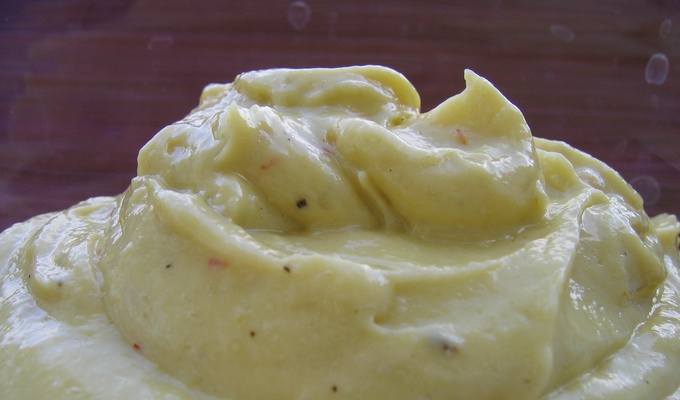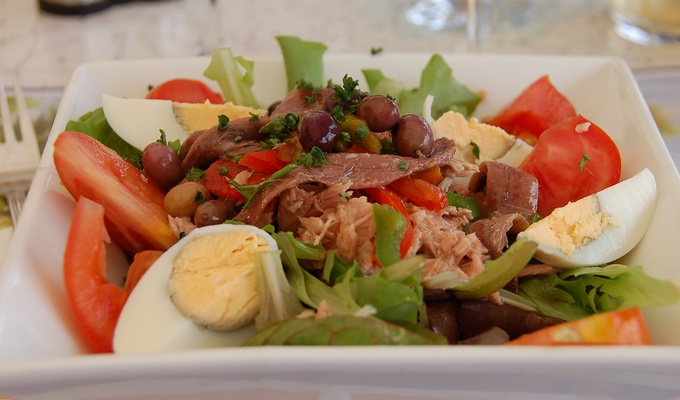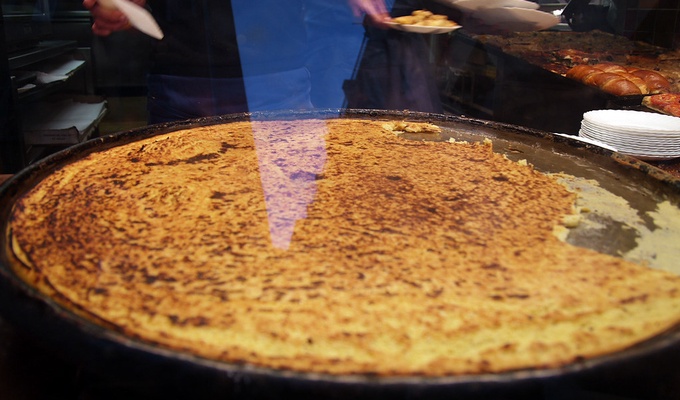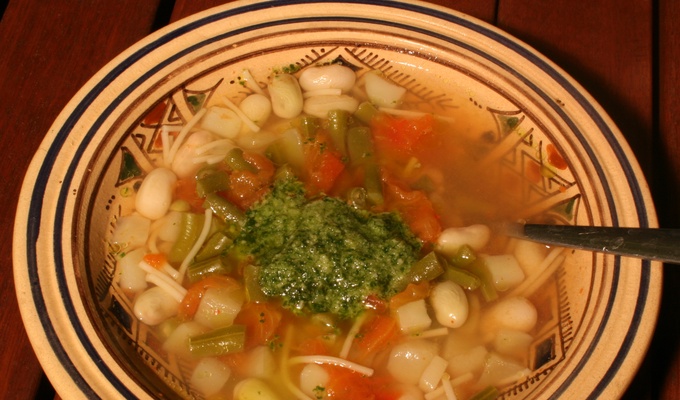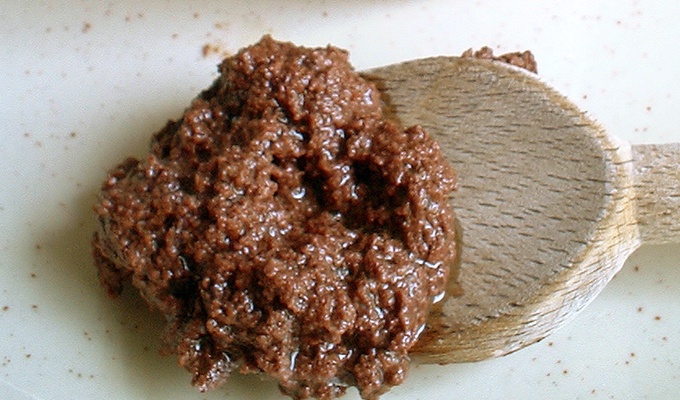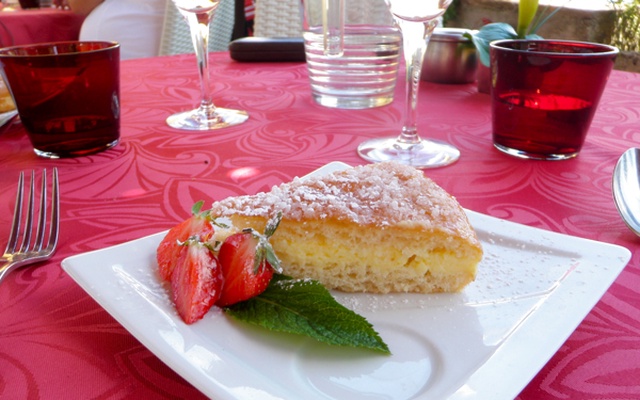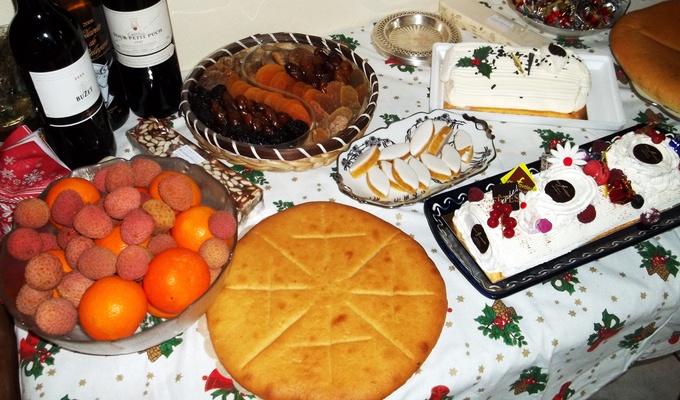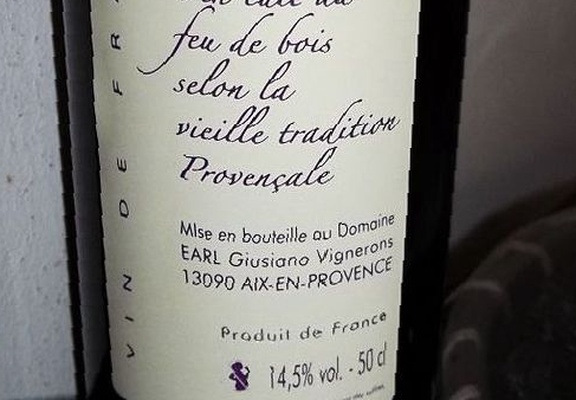The cuisine of Provence is the result of the warm, dry Mediterranean climate; the rugged landscape, good for grazing sheep and goats but, outside of the Rhône Valley, poor soil for large-scale agriculture; and the abundant seafood on the coast.
The basic ingredients are olives and olive oil, garlic, sardines, rockfish, sea urchins and octopus, lamb and goat, chickpeas, and local fruits, such as grapes, peaches, apricots, strawberries, cherries, and the famous melons of Charentais.
The fish frequently found on menus in Provence are the rouget, a small red fish usually eaten grilled, and the loup (known elsewhere in France as the bar), often grilled with fennel over the wood of grapevines.
Typical dishes
- Aïoli is a thick emulsion sauce made from olive oil flavoured with crushed garlic. It often accompanies a bourride, a fish soup, or is served with potatoes and cod (fr. Morue). There are many recipes.
- Bouillabaisse is the classic seafood dish of Marseille. The traditional version is made with three fish: scorpionfish, sea robin, and European conger, plus an assortment of other fish and shellfish, such as John Dory (called Saint-Pierre), monkfish, sea urchins, crabs and sea spiders included for flavour. The seasoning is as important as the fish, including salt, pepper, onion, tomato, saffron, fennel, sage, thyme, bay laurel, sometimes orange peel, and a cup of white wine or cognac. In Marseille the fish and the broth are served separately—the broth is served over thick slices of bread with rouille (see below).
- Brandade de morue is a thick purée of salt cod, olive oil, milk, and garlic, usually spread on toast.
- Daube provençale is a stew made with cubed beef braised in wine, vegetables, garlic, and herbes de provence. Variations also call for olives, prunes, and flavouring with duck fat, vinegar, brandy, lavender, nutmeg, cinnamon, cloves, juniper berries, or orange peel. For best flavour, it is cooked in several stages, and cooled for a day between each stage to allow the flavours to meld together. In the Camargue area of France, bulls killed in the bullfighting festivals are sometimes used for daube.
- Escabeche is another popular seafood dish; the fish (usually sardines) are either poached or fried after being marinated overnight in vinegar or citrus juice.
- Fougasse is the traditional bread of Provence, round and flat with holes cut out by the baker. Modern versions are baked with olives or nuts inside.
- Oursinade, a sauce made from sea urchins, often applied to fish. Its name refers to a "tasting" of sea urchins.
- La pissaladière is another speciality of Nice. Though it resembles a pizza, it is made with bread dough and the traditional variety never has a tomato topping. It is usually sold in bakeries, and is topped with a bed of onions, lightly browned, and a kind of paste, called pissalat, made from sardines and anchovies, and the small black olives of Nice, called caillettes.
- Ratatouille is a traditional dish of stewed vegetables, which originated in Nice.
- A traditional bouillabaisse from Marseille, soup and fish served separately
- Brandade de morue, a dish of salt cod and olive oil mashed with potatoes or bread in winter
- Daube, or Provençal beef stew, cooked in wine
- Pissaladière
- Rouille is a mayonnaise with red pimentos, often spread onto bread and added to fish soups.
- Socca is a speciality of Nice—it is a round flat cake made of chickpea flour and olive oil, like the Italian farinata. It is baked in the oven in a large pan more than a meter in diameter, then seasoned with pepper and eaten with the fingers while hot. In Toulon socca is known as La Cade, or panisse in Marseille.
- Soupe au pistou, either cold or hot, usually made with fresh basil ground and mixed with olive oil, along with summer vegetables, such as white beans, green beans, tomatoes, summer squash, and potatoes.
- Tapenade is a relish consisting of pureed or finely chopped olives, capers, and olive oil, usually spread onto bread and served as an hors d'œuvre.
- The calisson is the traditional confection of Aix-en-Provence, made from a base of almond paste flavoured with confit of melon and orange. They have been made in Aix-en-Provence since the 17th century.
- The gâteau des Rois is a type of Epiphany cake found all over France; the Provençal version is different because it is made of brioche in a ring, flavoured with the essence of orange flowers and covered with sugar and fruit confit.
- Tarte Tropézienne is a tart of pastry cream (crème pâtissière) invented by a St. Tropez pastry chef named Alexandre Micka in the 1950s, based on a recipe he brought from his native Poland. In 1955, he was chef on the set of the film And God Created Woman when actress Brigitte Bardot suggested he name the cake La Tropézienne. It is now found in bakeries throughout the Var.
- The Thirteen Desserts is a Christmas tradition in Provence, when thirteen different dishes, representing Jesus and the twelve apostles, and each with a different significance, are served after the large Christmas meal.
- Herbes de Provence (or Provençal herbs) are a mixture of dried herbs from Provence which are commonly used in Provençal cooking.
